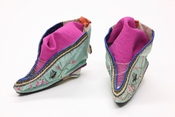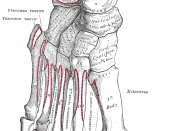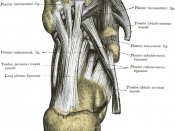Foot and Shoe Assessment - By Riaan Knoetze The foot is an incredibly complex mechanism, This introduction to the anatomy of the foot will not be exhaustive, but rather try and highlight the structures that will be of significant importance when making a choice in shoes.
1. Foot Physiology 101 The Forefoot contains the five Metatarsal bones and the Phalanges (The toes). The first Metatarsal bone bears the most weight and plays the most important role in propulsion. It is the shortest, thickest and provides anchorage for several tendons. The second, third, and fourth Metatarsal bones are the most stable of the Metatarsals.
Near the head of the first metatarsal, on the plantar surface of the foot, are two sesamoid bones (a small, oval shaped bone that develops inside a tendon, where the tendon passes over a bony prominence). They are held in place by their tendons and are supported by ligaments.
The midfoot includes five of the seven tarsal bones (the Navicular, Cuboid, and three cuneiform). The distal row contains the three Cuneiform and the Cuboid. The Midfoot meets the Forefoot at the five Tarsometatarsal (TMT) joints within the Midfoot itself.
The Talus and the Calcaneus make up the Hindfoot. The Calcaneus is the largest Tarsal bone and forms the heel itself. The Talus rests on top of it and forms the pivot of the ankle.
2. Criteria for Good Shoes Before one can buy a shoe, one has to know what criteria have to be met before a can be deemed as valuable. The following is fundamental criteria that every athletic orientated shoe should have: ⢠Stability - Shoes should be constructed in such a way as to prevent excessive or abnormal motion of the foot and leg.
⢠Durability - Because certain shoes are extremely stable when...


